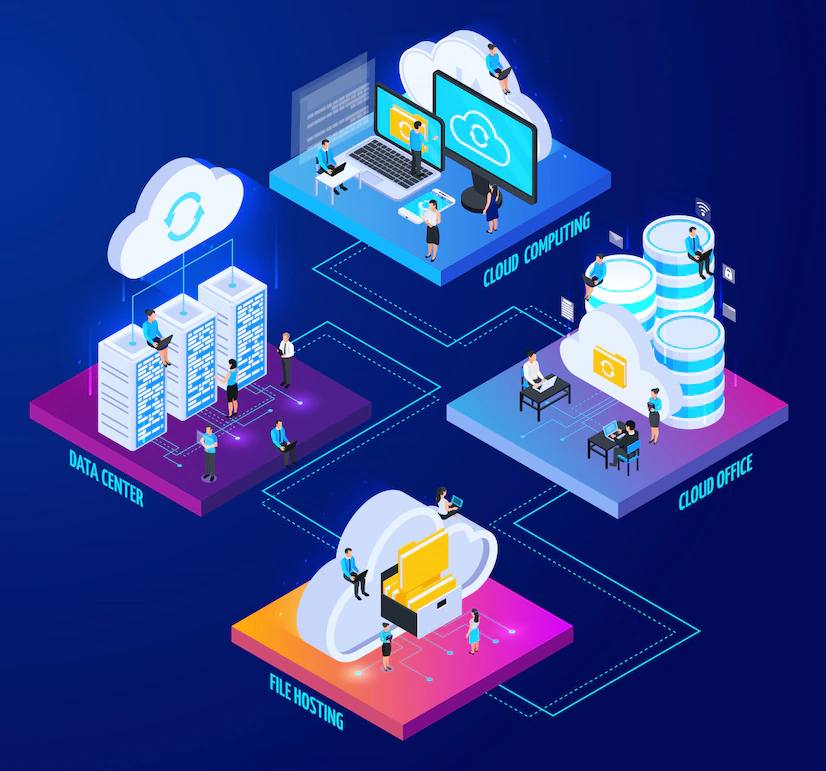
Cloud Adoption Concerns and Strategies to Overcome Those
Reduced infrastructure and training costs, real-time access to resources from anywhere at any time, better scalability, advanced data security features, unlimited storage capacity, enhanced collaboration, and automatic software upgrades – the benefits of cloud-based applications are manifold.
In fact, according to Statista, the market size of cloud applications is expected to be around $168.6 billion in 2025, up from $133.6 billion in 2021.
However, there are many cloud app development challenges that businesses must be aware of. Let us uncover these barriers and understand how to master them.
Concerns Regarding Cloud Adoption and Usage
Scalability Issues
One of the major challenges in effective cloud adoption and usage is related to scalability. While the cloud offers enhanced scalability, it depends a lot on how it is leveraged. The developers can reach the limit of data usage or a dead end leading to application data loading issues.
This challenge can be addressed by using a hybrid cloud plan that offers the flexibility required by the applications. Unlike predefined cloud plans, hybrid plans are scalable and can be changed according to the needs. Moreover, there is no need to pay an extra amount after exceeding the initially purchased limit.
Loosely Coupled Design
As customer demands keep changing in this dynamic world, cloud applications ideally need to be tightly coupled to the logic and implementation of services. While simple in principle, loosely coupled service design can lead to inconsistency-related challenges within the cloud environment.
To resolve this challenge and leverage the flexibility benefits of loosely coupled design, the developers need to understand different protocols and take responsibility for orchestrated behavior of the application.
Reliability and Availability
Cloud services are considered an alternative to offline storage and are marketed on less downtime. However, it is essential to use third-party or internal tools to constantly monitor the services provided– this is especially true for businesses that require high uptime of their web applications.
The solution is to supervise Service Level Agreements (SLAs), robustness, performance, and the business dependency on the services to ensure the around-the-clock availability of cloud applications. The security and protection level of applications received from cloud service providers should be verified to ensure their adherence to specific business requirements.
Application Security
Over 66% of IT specialists consider security as one of the major concerns in the context of cloud app development. Security is one of the most important aspects where organizations need support. Cloud applications may include various API integrations for easy user accessibility that could lead to extended security issues. Every day or the other, there are security issues related to accounting hacks, broken authentication, data breaches, and compromised credentials. Moreover, client security remains a major challenge due to the state of browsers. Cloud security is a shared responsibility – it is important for organizations to take all the required security measures and monitor access permissions with respect to their cloud applications.
Fortunately, cloud service providers have started putting efforts into improving security capabilities. The entire data should be encrypted using strong methods of encryption such as reverse proxy to manage SSL usage and other best practices to meet security needs.
Performance Issues
Cloud application performance can take a hit if the application is not designed or optimized for the cloud. Lift and shift approach for migrating your application to the cloud does not work for all applications. It is critical to understand which applications to move to the cloud, and if required, redesign their architecture to ensure high performance on the cloud. Also, the application should be tested often and in the early stage. It is crucial to conduct end-to-end performance testing to ensure optimal application performance.
Interoperability and Portability
While working with the cloud, interoperability is the ability to write code that can perfectly work with multiple cloud providers despite the differences between them. Portability provides the ability to run components or systems written for a cloud environment in another cloud environment. Interoperability and portability remain major challenges in the cloud environment when all the cloud systems cannot communicate with each other, cannot migrate to another platform, cannot transfer the data without any flaws, and cannot mix components from different services.
To make the cloud environment interoperable, run the application on various devices, and integrate other cloud services into your infrastructure seamlessly, it is important to adopt the necessary cloud computing standards. The increased accessibility leads to more interoperable software and platforms; the standard operating protocols also ensure that cloud applications are easier to use and cheaper to implement, operate, and maintain in the long run.
Make the Most of your Cloud Investments
It is essential to address all the cloud adoption and app development challenges and maximize the cloud’s benefits for your business. Whether you are developing platform-as-a-service, infrastructure-as-a-service, or software-as-a-service in any cloud environment, you can leverage its benefits by managing the above challenges.
Now that you know the barriers to cloud adoption and usage, it is time to start building a successful cloud strategy that suits your business requirements. Consult your cloud app development requirements with us.


 0
0


